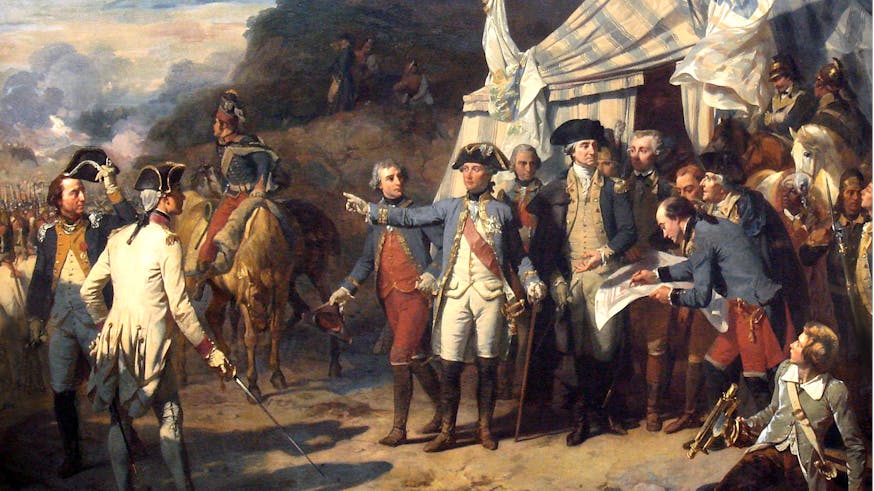Revolution Around the World
The Netherlands and the American Revolution
The Revolution Around the World series explores the impact of the American Revolution on the globe and the influence of people from other countries on the Revolutionary era.
What was happening around the world in 1776? When and why did different countries get involved in the Revolutionary War? What was the impact of the broader American Revolution on those countries?
Take a closer look as we examine the role the Netherlands played in the American Revolution.
What was happening in the Netherlands in 1776?
Many historians regard the Dutch Republic (the Netherlands), a federal republic of united provinces established in 1588, as the world’s first capitalist nation; Amsterdam, after all, is home to the world’s first full-time stock exchange. The influence of the Dutch grew rapidly through the 1600s. The Dutch East India Company (focused on Southeast Asia) and the Dutch West India Company (focused on North and South America and the Caribbean) established colonies around the globe. It was during this “Golden Age” of public-private enterprises that Dutch settlers founded New Amsterdam (later New York City).
By the latter half of the 1700s, the Dutch Republic remained a powerful international economic presence, but it was overshadowed by its imperial rivals. The Netherlands chose neutrality in the Seven Years’ War (the French and Indian War) and maintained its lucrative commercial arrangements. In 1776, the business of the Netherlands was business and they again tried to remain neutral to continue trading with both sides.
When did the Netherlands become involved in the American Revolution?
The American Revolution placed the Dutch Republic in a precarious position. Dutch merchants maintained decades-long relationships with American colleagues and sent war material as early as 1774. Word of American ships full of gunpowder, muskets, and cannonballs moored in Dutch Harbors outraged the British, and the Dutch Estates General (the governing body) quickly placed a (limited) moratorium on such transactions.
The Dutch government could not afford to support the American Revolution, but Dutch merchants could (and did). The British became increasingly frustrated with Dutch “neutrality” after France joined the American Revolutionary cause in 1778. Britain finally declared war on their former trading partner when the Netherlands joined the League of Armed Neutrality in December 1780.

Which side did the Netherlands choose, and why?
The Netherlands did not choose a side; a side chose the Netherlands. In the 1770s, Dutch merchants continued to sell war materiel to the American Revolutionaries and the French. Britain responded by more aggressively searching and seizing Dutch ships and shipments. When the Netherlands joined the Russian-sponsored League of Armed Neutrality, intended to protect such shipments, Britain declared war on the Netherlands. Thus, it was only after this declaration that the Estates General lost its prized neutrality. The resulting war, known as the Anglo-Dutch War, actually outlasted the Revolutionary War, not ending until 1784.
Who were the key Dutch players in this story?
Stadholder William V, Prince of Orange, the chief magistrate of the United Provinces of the Netherlands, was related by birth to the British royal house. He sided with King George III against the American rebels, though this allegiance was not enough to prevent the country from eventually warring with Britain.
A group calling themselves Patriottentijd (“Patriots”) sought to reform the Dutch government and restore republican ideals. They viewed the American Revolution with sympathy and admiration. The leader of the Patriots, Joan Derk van der Capellan tot den Pol, published pamphlets and secured loans in support of the American Revolutionaries.
An incident involving Revolutionary naval hero John Paul Jones highlights the political divisions within the Netherlands over the American Cause. Jones arrived in the Dutch port of Texel in late 1779 after his legendary capture of the British ship Serapis. The British blockaded the port and demanded delivery of Jones and his ships. The predicament created a political sensation, and the indecision of the Dutch Government gave Jones the time he needed to escape, much to the chagrin of the British.

What was the impact of the Netherlands’ involvement?
Beyond the obvious material contributions of Dutch manufacturers and merchants, the Netherlands supported the American Revolution morally, financially, and politically. In 1776 on the Dutch-controlled Caribbean island of St. Eustatius, cannons owned by the Dutch West India Company gave the first international salute to the flag of the United States. In 1778, John Adams obtained sizable loans from Dutch bankers, who continued supplying credit to the United States for years to come. In 1782 they became the second country to formally recognize the new United States. Perhaps most importantly, the political organization of the Netherlands offered lessons for the new United States, and the old Dutch republic offered inspiration for the new American one.
Dive Even Deeper
- Museum Films: On your next visit to the Museum, hear more about the role of the Netherlands in the American Revolution in two Museum films, Revolution shown in Lenfest-Myer Theater and War's Reach in The War at Sea gallery.
- In the Galleries: In the Museum's gallery about the war in the South, see an example of the rifle made in the Netherlands that the American militia troops were armed with at the Battle of Cowpens.
Learn More

Poland and the American Revolution

Spain and the American Revolution
